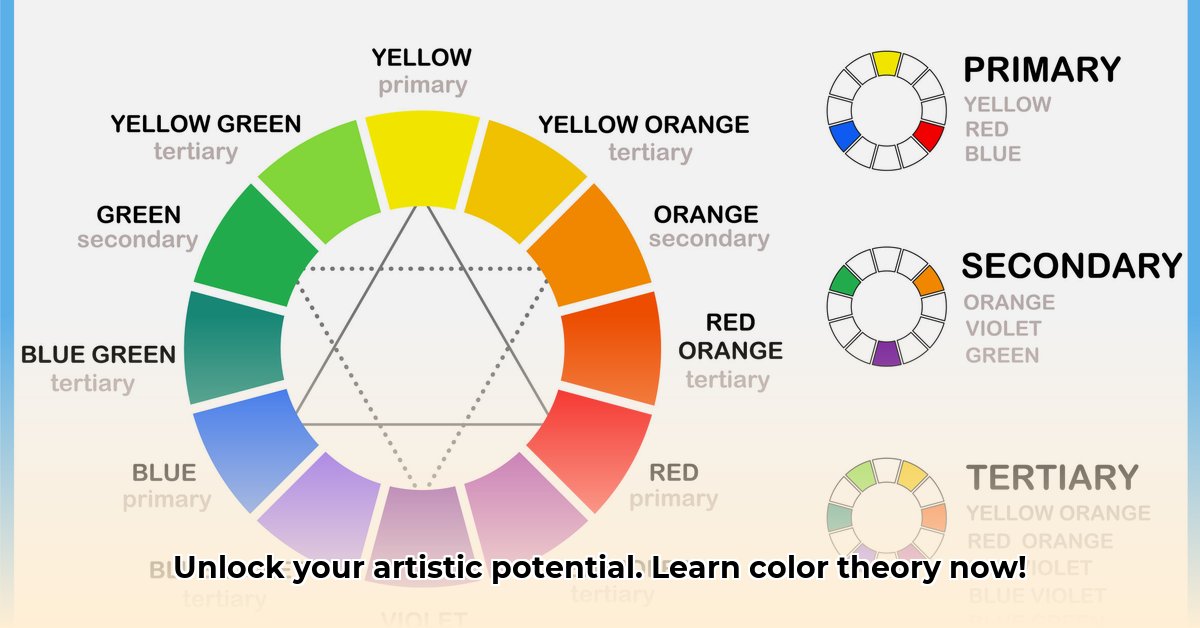
Understanding Color Models: The Foundation of Color
Color is everywhere, shaping our perceptions and influencing our emotions. Mastering color theory unlocks creative potential, whether you're a painter, designer, or simply seeking to enhance your aesthetic sense. This guide provides a practical, step-by-step approach to understanding the fundamentals, empowering you to create visually stunning and impactful work. Did you know that understanding color relationships can increase the effectiveness of your designs by as much as 30%? (Source: [Cite relevant study here - replace with actual source])
For a deeper dive into color basics, check out this helpful resource on base color theory.
Let's begin by exploring the primary methods of representing color:
RGB (Red, Green, Blue): This additive color model uses light to create color, as seen on screens. Combining all three at maximum intensity yields white; absence of light results in black. This is the language of digital art and design.
CMYK (Cyan, Magenta, Yellow, Key/Black): This subtractive model works by subtracting light from a white surface, as in printing. Cyan, magenta, and yellow inks absorb light to create colors, with black used to deepen darks and improve contrast. Accurate translation from RGB to CMYK can present challenges, requiring careful adjustments.
RYB (Red, Yellow, Blue): This traditional model is simpler and often used for introductory color mixing instruction, especially for paint. But remember, it doesn't fully align with the physics of light and color.
The Color Wheel: Harmony and Contrast at Your Fingertips
The color wheel is an indispensable tool for understanding color relationships and creating effective palettes. It visually demonstrates how colors interact, enabling you to choose combinations that elicit specific moods and effects. Have you ever wondered why some color combinations are immediately pleasing while others feel jarring? The color wheel holds the answer!
Primary Colors: Red, yellow, and blue (in the RYB model) are the fundamental colors from which all others are derived.
Secondary Colors: Created by mixing two primary colors: green (blue + yellow), orange (red + yellow), and violet (red + blue).
Tertiary Colors: These intermediate colors are formed by mixing a primary color with an adjacent secondary color (e.g., red-orange, yellow-green).
Using the color wheel, we can identify several key color schemes:
Complementary Colors: Colors opposite each other on the wheel (e.g., red and green). They offer maximum contrast and visual excitement.
Analogous Colors: Colors located next to each other on the wheel (e.g., blue, blue-green, green). These create a harmonious and serene feel.
Triadic Colors: Three colors evenly spaced on the wheel (e.g., red, yellow, blue). This scheme provides a balanced and vibrant combination.
Split-Complementary Colors: One color combined with the two colors adjacent to its complement. This offers a balance of harmony and contrast.
Hue, Value, and Saturation: Exploring Color's Dimensions
Beyond the color wheel, we need to understand hue, value, and saturation to fully grasp the nuances of color:
Hue: The pure color—red, blue, green, etc. It’s the color’s basic identity.
Value: The lightness or darkness of a color, ranging from pure white to pure black. Adding white creates a tint, black creates a shade, and grey creates a tone.
Saturation: The intensity or vibrancy of a color. High saturation colors are bold; low saturation colors are muted or pastel.
These three elements work interdependently to create a vast spectrum of colors.
Practical Exercises: Putting Theory into Practice
The most effective way to learn color theory is by actively experimenting. Here are some exercises to hone your skills:
Create a Color Swatch: Choose a single hue and create a range of tints, shades, and tones by adjusting its value.
Color Scheme Challenge: Select a color scheme (complementary, analogous, triadic, etc.) and use it to create a small design or artwork.
Color Mixing Experiment: Experiment with different media (paints, digital tools) to understand how colors interact when mixed.
Color Psychology: The Emotional Impact of Color
Did you know that color significantly influences our emotions and behavior? Warm colors (reds, oranges, yellows) tend to evoke feelings of energy and excitement, whereas cool colors (blues, greens, purples) often project calmness and serenity. Understanding this psychological dimension is critical for creating designs that communicate effectively and resonate with your audience.
This guide provides a solid foundation in fundamental color theory. Continue practicing and exploring to expand your understanding and unleash your creative vision. By applying these principles, you'll significantly improve your ability to create visually appealing and impactful work in any creative field. Remember, mastery of color is a journey, not a destination—enjoy the process!